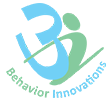One in every 57 children is diagnosed with an autism spectrum disorder (ASD) in Canada. This neurodevelopmental disorder alters how the brain processes and organizes information. This impairs a child’s reasoning, intuition and perception abilities and creates barriers in verbal and nonverbal communication.
ASDs are referred to as autism spectrum disorders because all children diagnosed with autism are unique as their skills strengths and deficits are unique. Because ABA therapy is evidence-based it is recommended as the treatment of choice for autism.
Symptoms/behaviors of ASDs can range from mild to severe and may seem to appear gradually or suddenly. In some cases, parents have also noted regression. Atypical development may be observed from birth, or more commonly, become noticeable during the 12- to 36-month period. Symptoms include:
Social Deficits
Children with autism have difficulty in social interactions. They may avoid eye contact and interactions with people and resist or passively accept attention. They are often unable to read social cues or exhibit emotional reciprocity. Thus, they are unable to predict or understand other peoples’ behavior. They may also have difficulty controlling emotion, maybe disruptive or aggressive at times, or may lose control, especially when frustrated or presented with a new situation or environment. Head-banging, hair-pulling, and arm-biting may occur.
Communication Difficulties
Communication skills are affected in children with autism, but difficulties vary. Some children may have good basic language skills, but exhibit difficulty initiating or sustaining conversations, such as not giving others the opportunity to respond. Others may experience delays or regression in language development; still, others remain mute or may use language in unusual ways, such as repeating a phrase, or parroting what they hear (echolalia). Body language is also often hard to read in children with autism. Facial expressions, tone of voice, and gestures often do not match verbal content and emotions. They have difficulty expressing what they want or need. They may also appear deaf, not responding to their names or attempts at conversation.
Repetitive Behaviors
Patterns of behavior, interests, and activities may be restricted, repetitive, or stereotyped. For example, a child may spend long periods of time arranging specific toys in a particular manner, rather than playing with the toys. Intense preoccupation with certain topics, such as obsessively studying maps, may also be seen. Odd repetitive motions, either extreme or subtle, such as arm-flapping, freezing, rocking back and forth, or walking on their toes may also occur. Often, people with autism demand consistency in their environment. A minor change in routine may be tremendously upsetting.
Sensory Difficulties
In children with autism, the brain seems unable to balance the senses appropriately. Many autistic children are highly attuned or even painfully sensitive to certain sounds, textures, tastes or smells. Some seem oblivious to cold or pain but react hysterically to things that wouldn’t bother other children. In some people, the senses are even scrambled. For example, touching a certain texture may induce a gagging response.
To date, no biological diagnostic tests exist that detect autism. There are screening tools and tests that measure the prevalence of symptoms. Symptoms may be present from birth or may occur after months of normal development. However, no two children with these disorders behave the same way. Children as young as 18 months may be diagnosed but have different clinical features than an older child with autism.
Between 18 months and 36 months, symptoms may include:
- Limited pretend play
- Lack of pointing to demonstrate interest
- Reduced gaze following
- Less frequent demonstration of repetitive, stereotypic behaviors
- Not responding to name
- Lack of imitation
- Lack of joint attention
In children with autism between 2 years and 3 years of age, the following features may be observed:
- Communication difficulties
- Socialization deficits with caregivers
- Perceptual sensitivity
- Other difficult behaviors
- Scripting
- Splinter skills


